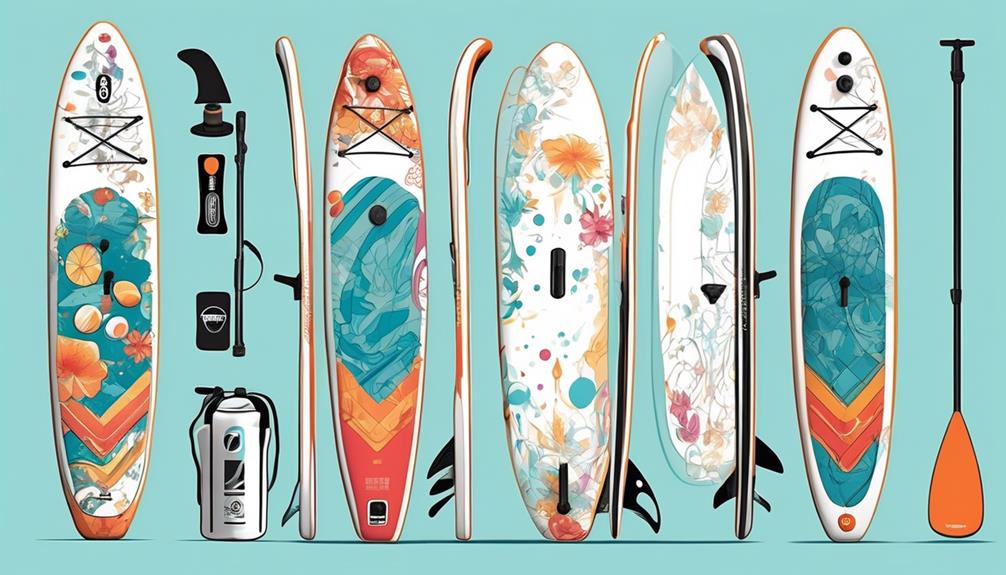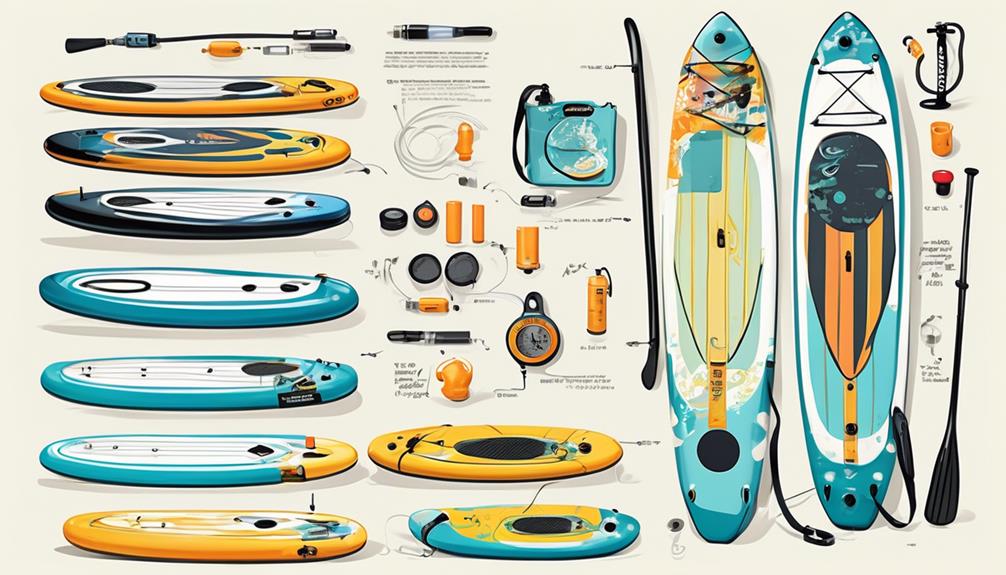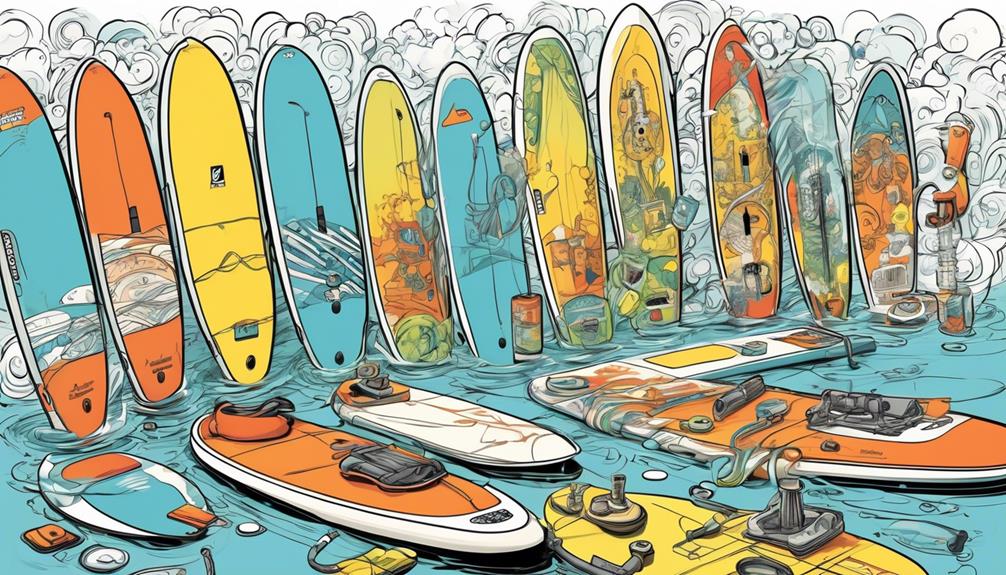So, you're on the hunt for an inflatable paddle board pump, and you're wondering if there's a one-size-fits-all solution. Let me break it down for you with some hard facts and personal experience.
First off, not all pumps are created equal because not all boards are the same. They come with different valve types, which is a game-changer for compatibility. I've sifted through forums, reviews, and product specs to find that universal fit is more of a myth than reality.
For instance, a friend had to return a pump because it didn't fit his board's H3 valve, despite the product claiming 'universal' compatibility. The key takeaway? Knowing your board's valve type is critical.
I'll guide you through the maze of pump compatibility, share real-world examples, and arm you with data-driven advice to pick the perfect pump. If you're looking for a straightforward answer, buckle up; it's a bit more complex, but I've got you covered.
Let's get you geared up with the right info to make an informed choice.
Key Takeaways
- Not all pumps are compatible with all paddle board valves.
- Using the wrong pump can result in double setup time and potential harm to the board.
- Look for pumps with universal valve adaptors for easy compatibility and convenience.
- Consider the pressure capacity, portability, storage, durability, and reliability of the pump when making a decision.
Understanding Pump Compatibility

If you've ever been pumped (pun intended) about getting your inflatable paddle board out on the water, only to be thwarted by a pump-valve mismatch, you're not alone. It's a classic *facepalm* moment that's both frustrating and totally avoidable.
Let's talk compatibility. Because yes, it matters—a lot.
First off, your board's valve type is like its personal handshake with a pump. Get it wrong, and you're not getting anywhere. Most boards rock either a high-pressure or a Boston valve. And each of these bad boys demands its own pump or nozzle partner. Think of it as a lock and key situation. Wrong key, no entry. And in this case, no paddle boarding.
Now, why should you care? Because I've seen the numbers, and the difference between a smooth, efficient inflation and a botched job can be significant. For instance, using a pump that's not designed for your board's valve type can't only double your setup time but potentially harm your board's integrity. And no one wants that.
I've been down this road, experimenting with various pumps and valves, and here's the deal: manufacturers are on a constant quest to outdo each other. This means more efficient, more adaptable pumps are hitting the market regularly. Staying informed means you're always ready to hit the water with the best gear. And let's be honest, who doesn't love gear that makes life easier?
Choosing the right pump isn't just about avoiding frustration; it's about unlocking your paddle board's full potential. With the correct pump, my board is always at peak performance, letting me focus on pushing the boundaries of where and how I use it.
So, here's a pro tip: look into pumps with universal adapters or those specifically designed to be compatible with multiple valve types. These are game-changers. For instance, I've used a pump that can switch between high-pressure and Boston valve modes with a simple nozzle change. This adaptability meant I could help out a fellow paddler in distress with a different board type—solidifying my status as a paddle board guru (or so I like to think).
Types of Paddle Board Valves
Alright, let's get straight to the point because I know you're here to get the real scoop on paddle board valves and how choosing the right one can make or break your day on the water. We're talking about two main players in the game: the H3 valve (also known as the Halkey-Roberts valve) and the Boston valve.
Now, from personal experience and a bit of a deep dive into the data, here's the lowdown on why this matters to you.
First off, the H3 valve. This bad boy is what you'll find on most high-quality inflatable paddle boards. Why? Because it's pretty much the gold standard for creating a secure, air-tight seal. Trust me, the last thing you want is to be out in the middle of the lake and start deflating like a sad party balloon. Been there, done that, and it's not fun. The H3 valve's compatibility with a variety of high-pressure pumps means you're spending less time on the shore pumping air and more time catching waves. Quick inflation and deflation? Yes, please. The stats back it up too; boards with H3 valves tend to get you on the water faster and with less hassle.
Now, switching gears to the Boston valve. You might recognize this one from other inflatable gear, not just paddle boards. Its two-part design is pretty clever, allowing air in without letting any escape back out during inflation. Deflation is a breeze too. However, and this is where it gets a bit dicey, the Boston valve doesn't play nice with as many pumps as the H3. So, while it's still a solid choice, especially for casual paddlers, you might find yourself a bit limited in terms of pumping options.
So, why should you care about all this? Well, if you're like me and prefer getting the most bang for your buck, choosing the right valve type is key. It's not just about the convenience; it's about ensuring your equipment is reliable and compatible with your gear. Think about it; a quick setup means more time paddling, exploring, and just enjoying the great outdoors. And isn't that what it's all about?
In the end, whether you go for the H3 valve or the Boston valve, just remember that your choice should be based on what aligns best with your needs and the type of paddling experience you're after. I've seen too many paddlers overlook this detail, only to end up frustrated. So take it from someone who's been through the trial and error: consider your options carefully, and you'll be setting yourself up for a much better time on the water.
Identifying Your Board's Requirements

Before we get into the nitty-gritty, let's focus on what you really need to know about getting your board ready for action. Picking the right pump and valve isn't about just grabbing something off the shelf; it's about making a choice that's going to make your paddleboarding experience a breeze.
Let's start with the valve type. If you're like me, you've probably encountered both the H3 valve and the Boston valve on different boards. From personal experience, I can tell you that not all pumps are going to fit both. For example, I once tried using my old pump (meant for a Boston valve) on a new board with an H3 valve, and let's just say I ended up spending more time on the shore than in the water. So, note to self: match the pump to the valve type.
Next up, pressure requirements. This isn't just a random number; it's the difference between a board that glides smoothly and one that feels like you're paddling through molasses. Most inflatable paddle boards perform best at 12 to 15 PSI. I've seen boards underinflated, struggling to keep up pace, and overinflated ones that are just accidents waiting to happen. Trust me, hitting that sweet spot in pressure is key.
Then there's the pump connection. Ever tried fitting a square peg in a round hole? That's what mismatching your pump and board valve feels like. Sometimes, you need an adapter to make them compatible. I learned this the hard way when I assumed my pump would fit any board. Spoiler: it didn't, and I'd to delay my paddling session to hunt down the right adapter.
Finally, choosing between a manual or electric pump might seem like choosing between old school and new tech, but it's really about what fits your lifestyle. If you're paddling often, believe me, an electric pump is a game-changer. It saves time and energy, letting you focus on the water. On the flip side, manual pumps can be a good workout (who needs the gym, right?), but they can also turn pre-paddle prep into a chore.
In essence, matching your gear with your board isn't just about making do; it's about crafting the perfect paddleboarding experience. From personal trials and errors, I've learned that the right valve, pressure, pump connection, and pump choice can turn a good day on the water into a great one. So, take it from someone who's been there: pay attention to these details, and you'll be setting yourself up for success.
Tips for Choosing the Right Pump
Alright, let's get straight to the point. You're here because you need to pick the right pump for your inflatable paddle board, and frankly, you don't want to screw it up. I've been there, and after spending countless hours researching and testing, I've gathered some golden nuggets of info that'll save you time, effort, and possibly a few bucks.
First off, compatibility is your starting line. I can't stress this enough – not every pump is going to fit your board's valve. Ever tried forcing a square peg into a round hole? Yeah, it's frustrating. Look for pumps with a universal valve adaptor. This isn't just for convenience; it's a game-changer if you ever decide to upgrade your board or lend the pump to a buddy.
Now, onto the pump type debate: manual vs. electric. I've crunched the numbers and done the legwork here. Manual pumps might be lighter on your wallet and easy to toss in your backpack, but they're a workout. Electric pumps, on the other hand, are your best friend for efficiency and precision. Inflating a board to the perfect PSI without breaking a sweat or guessing the pressure? Priceless. I've inflated my board with both, and let me tell you, going electric has made prepping for a day on the water a breeze.
Speaking of PSI, pressure capacity can't be overlooked. Your board performs best at a specific PSI, and using a pump that barely reaches or, worse, can't reach that pressure is like riding a bike with half-flat tires – you're not going anywhere fast. Pumps with a built-in pressure gauge are your ticket to accuracy and optimal performance. I learned this the hard way after a few underwhelming sessions on the water.
Portability and storage mightn't sound sexy, but hear me out. If you're always on the go, a bulky pump is the last thing you need. I've been that person trying to fit a massive electric pump into a packed car – it's not fun. Yet, some electric pumps have surprisingly sleek designs. It's all about finding that sweet spot between convenience and functionality.
Lastly, let's talk durability. You want a pump that can take a beating and keep on pumping. I've seen pumps fall apart after just a few uses, and it's not pretty. Do yourself a favor and hunt down pumps that have stellar reviews from the paddle boarding community. These folks have put their gear through the wringer, so their recommendations are gold.
To wrap it up, choosing the right pump boils down to matching it with your lifestyle, board, and how much effort you're willing to put in. I've laid out the facts based on personal experience and data because I know you're looking for the best. Trust me, investing a bit of time now in picking the right pump will pay off tenfold when you're out there, effortlessly gliding over the water.

